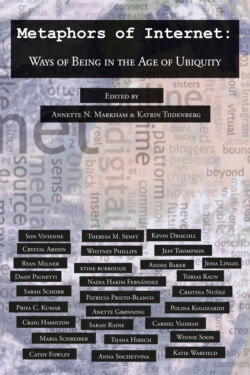Читать книгу Metaphors of Internet - Группа авторов - Страница 18
Оглавлениеjeff thompson
Turker Computers is a project that sets out to make visible the personal, varied relationship between a person and their computer. A simple request was made on Amazon’s crowd-labor site Mechanical Turk over a period of approximately a year: take a photograph of your computer, and include a name (or handle/alias) and where you live (as vague as you like). The responses came from locations across the globe, a selection of which is shown in this art reel. The images from this project turn the webcam around, not showing the people who populate the internet, or make the internet work, but the machines we collaborate with to access it and the spaces in which we use them.
The images of the technology economy we see most often are of hip offices, open floorplans, and ping-pong tables. But many of the online services that we think of as being digital are in fact a modulation of automation and human intervention (cf. Sarah T. Roberts’ new book Behind the Screen (2019) for a critical take on the invisible work of content moderation). Our experience with our computer, seemingly intimate and one-directional, is very often mirrored on the other end by a tech laborer and their machine. While having humans perform physical computation isn’t new,1 seeing the physical space in which this work happens makes the issue of class very clear. Turkers (the name given by this community for someone ←47 | 48→who does work on Mechanical Turk) make for an average of $1.20 to $5.00 USD per hour (Folbre, 2013)2 and do not spend their days in fancy Bay Area offices, taking advantage of unlimited vacation time or free meals. In these images we see where Turkers work: coffee tables, desks in a home office, on top of beds, in the kitchen or basement.3
In much of my work as an artist, I am interested in reversing our technological gaze: instead of using a tool or looking through a screen, I am interested in seeing technology as aesthetic, cultural, political objects. The physical relationship we form with our computers is something that is constantly re-written as we upgrade our machines and operating systems, and the history of this relationship is constantly being lost and written over as well. We have many images of server rooms, early mainframes, and depictions of computers in film and television, but we have few images of the everyday ways that we engage our computers—desks strewn with coffee mugs and soda cans, laptops propped up on random objects, spaces to work negotiated within one’s home. This project is about capturing a tiny, specific piece of that.
Figure 5.6: Medford, New York.
Figure 5.7: Bobbatron, Hawaii.
Figure 5.8: Parkland, Florida.
Figure 5.9: Dylan, Kuala Lumpur.
Figure 5.11: White Sands, New Mexico.
Figure 5.12: The Mouse, Portland, Oregon.
←48 | 49→←53 | 54→←52 | 53→←51 | 52→←50 | 51→←49 | 50→←54 | 55→
1 For a wonderful account of human computation, see David Alan Grier’s (2005) When Computers Were Human. This practice overlapped considerably with the era of the digital computer. At its peak, the Mathematical Tables Project, funded by the WPA, employed more than 400 human computers at its site in New York City from the late 1930s through 1948.
2 https://economix.blogs.nytimes.com/2013/03/18/the-unregulated-work-of-mechanical-turk—My workers were paid $1 USD for their images, and since Amazon provides fairly detailed stats, I can tell this works out to about $8.75/hour—not great but above the minimum wage for the United States. For more on how I tried to balance fairness and a limited artist’s budget for this project, see http://www.jeffreythompson.org/blog/2014/11/14/turker-computer-process-notes
3 See the blog post above for further work that shows a shift in Mechanical Turk worker demographics during the run of the project from non-Western to mostly American, due in large part of Amazon changing their policies. This change is evident in the project too, shifting towards Western homes and higher-end computers.
